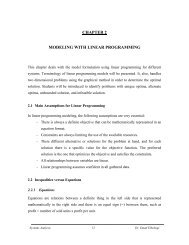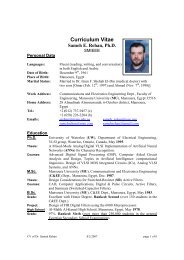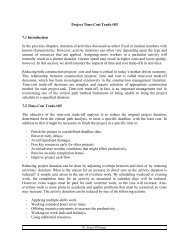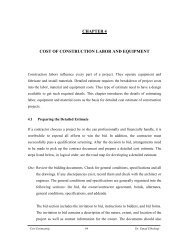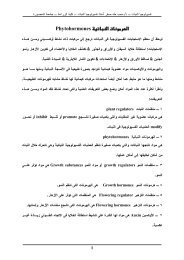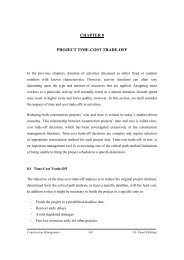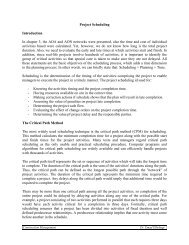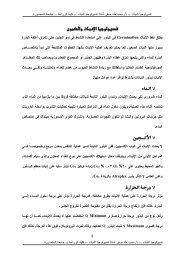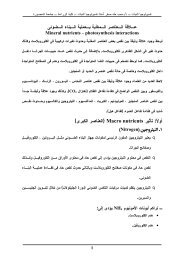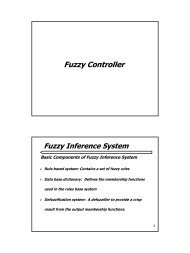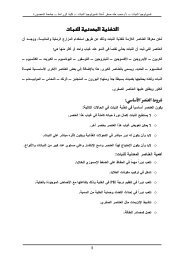Thyroid and Parathyroid
Thyroid and Parathyroid
Thyroid and Parathyroid
Create successful ePaper yourself
Turn your PDF publications into a flip-book with our unique Google optimized e-Paper software.
Active accumulation of iodide in the thyroid gl<strong>and</strong> is stimulated by TSH, acting via a<br />
specific membrane receptor located in the thyrocyte plasma membrane. This<br />
mechanism is probably through changes in cyclic adenosine monophosphate (cAMP).<br />
Once inside the thyroid cell, the iodide diffuses through the cytoplasm to the apical<br />
membrane. It remains in its free state for a short time before being oxidized by<br />
peroxidase <strong>and</strong> hydrogen peroxidase. Iodine rapidly links to tyrosine residues present<br />
in abundance in thyroglobulin, a thyroid-specific protein, resulting in the formation of<br />
two separate molecules, monoiodotyrosine (MIT) <strong>and</strong> diiodotyrosine (DIT). Two<br />
molecules of DIT combine to form tetraiodothyronine, or thyroxine (T4); a molecule<br />
of MIT <strong>and</strong> DIT combine to form 3,3',5-triiodothyronine (T3) or 3,3'5'triiodothyronine,<br />
reverse T3 (rT3). The coupling steps are catalyzed by peroxidase in<br />
. the presence of H2O2 <strong>and</strong> also are rate dependent on TSH<br />
When iodide transport is defective or when oxidation to iodine is impaired because of<br />
disease or pharmacologic agents, goiter or hypothyroidism may result. The antithyroid<br />
drugs (propylthiouracil, methimazole, <strong>and</strong> carbimazole) inhibit the oxidation of iodide<br />
to iodine by competitive inhibition of peroxidase <strong>and</strong> also may interfere with the<br />
coupling reaction. In high doses iodide also inhibits iodine trapping. It also has an<br />
antithyroid action by inhibiting the proteolysis involved in the release of thyroid<br />
hormone. Potassium iodide tablets often are administered to people exposed to<br />
radiation leaks involving radioactive forms of iodine, such as nuclear accidents,<br />
. because it blocks trapping by the thyroid gl<strong>and</strong><br />
Storage, Secretion, <strong>and</strong> Metabolism of <strong>Thyroid</strong> Hormone<br />
T4 <strong>and</strong> T3 are bound to thyroglobulin <strong>and</strong> are stored in the colloid of the thyroid<br />
follicles. Release of the active hormones is by a process of endocytosis. The colloid is<br />
taken up by the follicular cell as discrete packets (endosomes), which then fuse with<br />
lysosomes containing hydroxylases. Hydrolysis results in production of all component<br />
parts, T4, T3, rT3, MIT, <strong>and</strong> DIT. Through a process of deiodination most of the<br />
iodide is released from MIT <strong>and</strong> DIT <strong>and</strong> reused in the follicle. The iodothyronines<br />
are more resistant to this process <strong>and</strong> are secreted; these steps also are TSH<br />
. dependent<br />
The active thyroid hormones circulate in the plasma attached to plasma proteins,<br />
principally the carrier proteins, thyroid hormone –binding globulin (TBG), thyroid<br />
hormone–binding prealbumin (TBPA), <strong>and</strong> albumin. About 99.98 percent of thyroid<br />
hormone circulates in the plasma bound to protein, <strong>and</strong> the remaining 0.02 percent is<br />
unbound <strong>and</strong> is the free, active physiological fraction. In some conditions TBG may<br />
be increased, usually as a result of estrogen effects of pregnancy or the contraceptive<br />
pill. This results in a higher circulating amount of T4because of increased serum<br />
. binding capacity. In this situation, active free T 4levels remain unaltered<br />
T3 is the more potent of the two thyroid hormones (rT3 is biologically inert), although<br />
its circulating plasma level is much lower than that of T4; the ratio is 10:1 to 20:1. T3<br />
is less tightly bound to protein in the plasma than T4, <strong>and</strong> so it enters tissues more<br />
readily. T3 is three to four times more active than T4 per unit weight, with a half-life<br />
of about 1 day, compared to about 7 days for T4. Though the thyroid gl<strong>and</strong> produces<br />
some T3 <strong>and</strong> rT3, it is known that 75 percent of T3 is produced by the extrathyroidal<br />
conversion of T4 to T3 in the peripheral tissues. Almost 85 percent of T4 is converted



